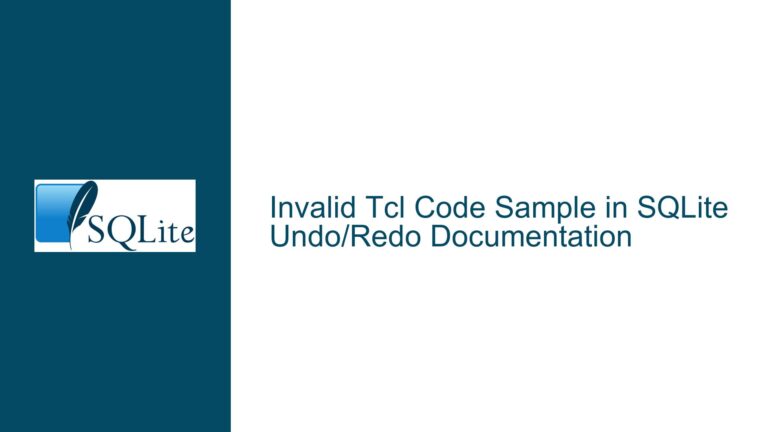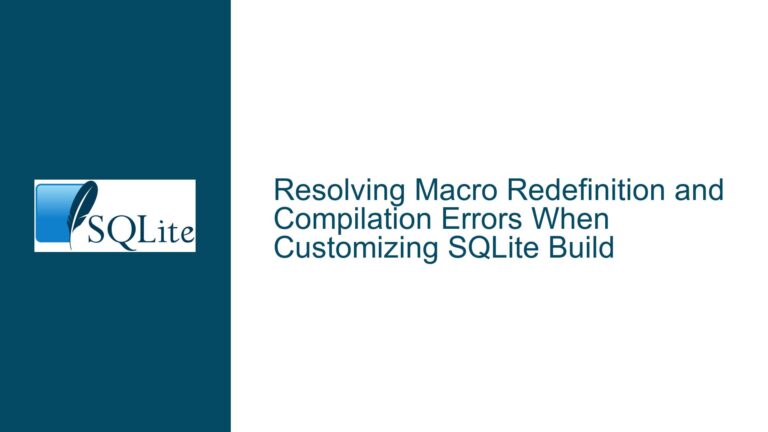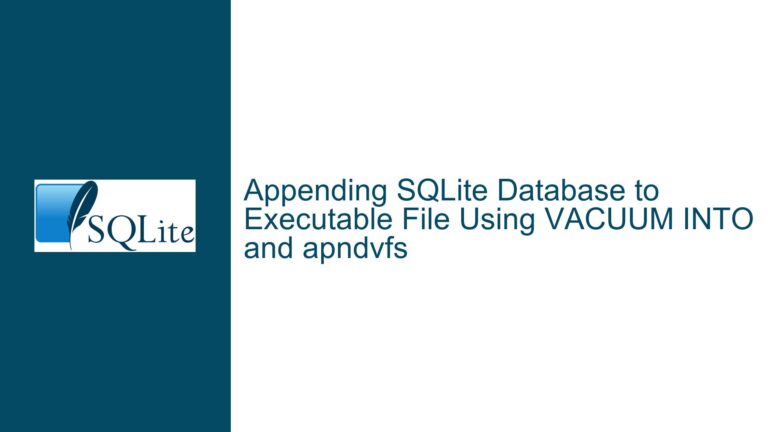Using SQLite Triggers to Manipulate Virtual Tables and Generate Artifacts
Understanding the Integration of Virtual Tables and Triggers in SQLite
The core issue revolves around the integration of SQLite triggers with virtual tables to perform complex operations such as generating PDF reports or sending emails upon insert or update events. The challenge lies in the inability to directly execute SQL queries within virtual table functions, as there is no straightforward way to access the sqlite3 context for querying other tables. This limitation makes it difficult to manipulate data across tables or generate artifacts based on the data changes.
Virtual tables in SQLite are a powerful feature that allows developers to create custom table-like structures that can interact with external data sources or perform complex computations. However, their integration with triggers—special database operations that automatically execute in response to specific events like inserts or updates—is not well-documented or straightforward. The primary hurdle is the lack of direct access to the sqlite3 context within virtual table functions, which is essential for executing SQL queries.
The discussion highlights the need for a mechanism to save a copy of the sqlite3 handle passed to the xConnect or xCreate methods of the virtual table. This handle can then be used within other methods of the virtual table to execute SQL queries. This approach is used by several SQLite extensions, such as fts5 and rtree, which manipulate data across tables or perform complex operations based on data changes.
Exploring the Limitations and Workarounds for Virtual Table Queries
The inability to directly execute SQL queries within virtual table functions stems from the design of SQLite’s virtual table API. The API does not provide a built-in mechanism to access the sqlite3 context for querying other tables. This limitation is particularly problematic when trying to perform operations that require data from multiple tables or when generating artifacts based on data changes.
One possible cause of this limitation is the separation of concerns in SQLite’s architecture. Virtual tables are designed to be self-contained entities that interact with external data sources or perform computations without directly accessing the database’s internal state. This design ensures that virtual tables remain lightweight and do not interfere with the database’s core operations. However, it also limits their ability to interact with other tables or perform complex operations that require access to the database’s internal state.
Another possible cause is the lack of documentation and examples demonstrating how to integrate virtual tables with triggers. The SQLite documentation provides detailed information on creating virtual tables and triggers separately but does not provide clear guidance on how to combine these features to perform complex operations. This lack of documentation makes it difficult for developers to implement the desired functionality without extensive trial and error.
The discussion suggests a workaround by saving a copy of the sqlite3 handle passed to the xConnect or xCreate methods of the virtual table. This handle can then be used within other methods of the virtual table to execute SQL queries. This approach effectively bypasses the limitation by providing access to the sqlite3 context within the virtual table functions. However, this workaround requires a deep understanding of SQLite’s internal architecture and may not be suitable for all use cases.
Implementing Virtual Table Triggers for Artifact Generation
To implement virtual table triggers for artifact generation, developers need to follow a series of steps to ensure that the virtual table can access the sqlite3 context and execute SQL queries. The first step is to create a virtual table that saves a copy of the sqlite3 handle passed to the xConnect or xCreate methods. This handle can then be used within other methods of the virtual table to execute SQL queries.
The next step is to create a trigger that interacts with the virtual table. The trigger should be designed to execute in response to specific events, such as inserts or updates, and should call the appropriate methods of the virtual table to perform the desired operations. For example, the trigger could call a method of the virtual table to generate a PDF report or send an email based on the data changes.
The final step is to test the implementation to ensure that the virtual table and trigger work together as expected. This involves verifying that the virtual table can access the sqlite3 context and execute SQL queries, and that the trigger correctly calls the virtual table methods to perform the desired operations. Testing should also include edge cases and error handling to ensure that the implementation is robust and reliable.
In conclusion, the integration of SQLite triggers with virtual tables to perform complex operations such as generating PDF reports or sending emails is a challenging but achievable task. By understanding the limitations and workarounds for virtual table queries, and by following a series of steps to implement virtual table triggers, developers can achieve the desired functionality and enhance the capabilities of their SQLite databases.






